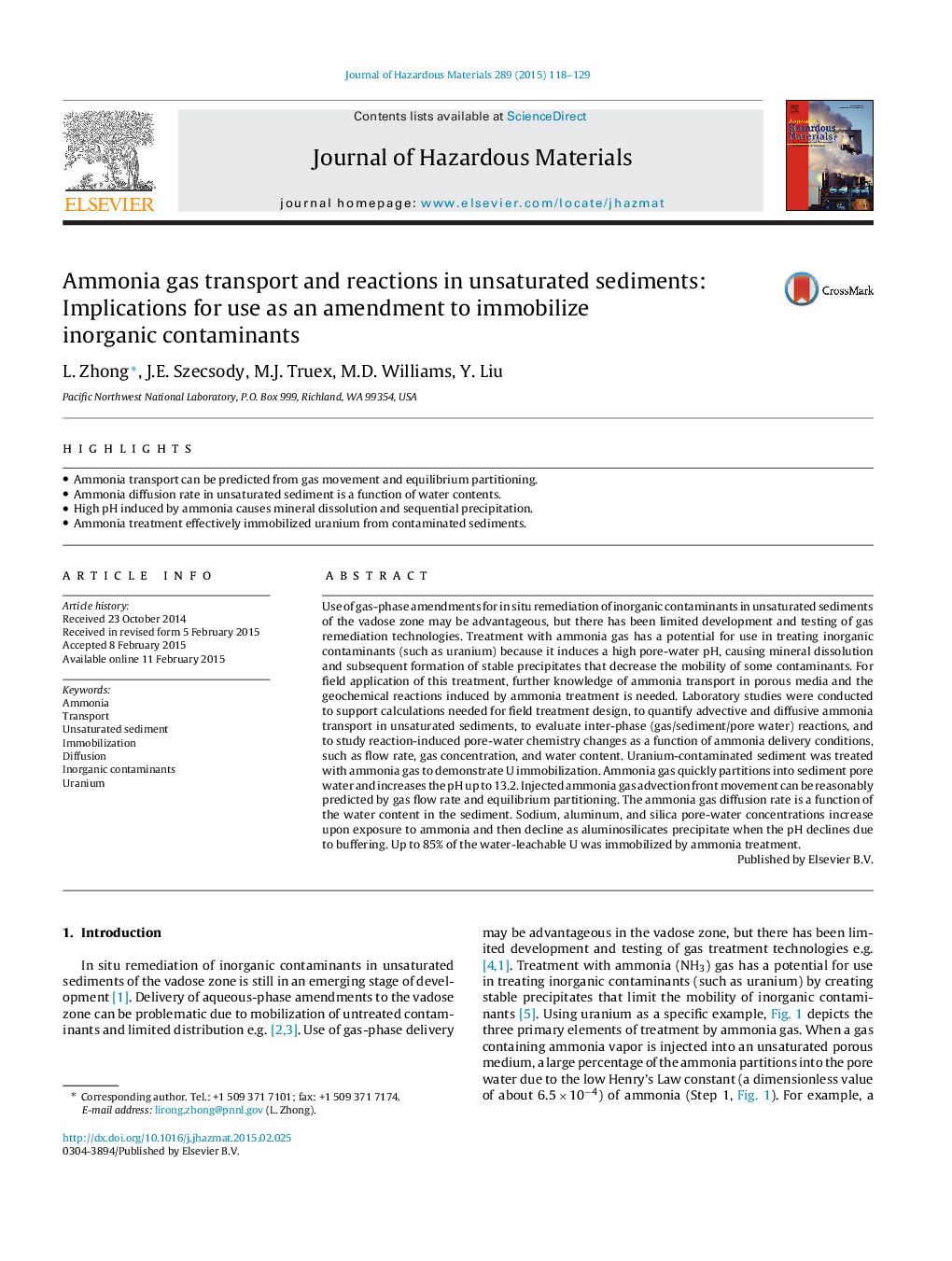| کد مقاله | کد نشریه | سال انتشار | مقاله انگلیسی | نسخه تمام متن |
|---|---|---|---|---|
| 576189 | 1453071 | 2015 | 12 صفحه PDF | دانلود رایگان |
عنوان انگلیسی مقاله ISI
Ammonia gas transport and reactions in unsaturated sediments: Implications for use as an amendment to immobilize inorganic contaminants
ترجمه فارسی عنوان
حمل و نقل گاز آمونیاک و واکنش در رسوبات غیر اشباع: اثرات استفاده از آن به عنوان یک اصلاحیه جهت غلبه بر آلاینده های معدنی
دانلود مقاله + سفارش ترجمه
دانلود مقاله ISI انگلیسی
رایگان برای ایرانیان
کلمات کلیدی
آمونیاک حمل و نقل، رسوبات غیر اشباع، ایمن سازی، نفوذ، آلاینده های معدنی، اورانیوم،
موضوعات مرتبط
مهندسی و علوم پایه
مهندسی شیمی
بهداشت و امنیت شیمی
چکیده انگلیسی
Use of gas-phase amendments for in situ remediation of inorganic contaminants in unsaturated sediments of the vadose zone may be advantageous, but there has been limited development and testing of gas remediation technologies. Treatment with ammonia gas has a potential for use in treating inorganic contaminants (such as uranium) because it induces a high pore-water pH, causing mineral dissolution and subsequent formation of stable precipitates that decrease the mobility of some contaminants. For field application of this treatment, further knowledge of ammonia transport in porous media and the geochemical reactions induced by ammonia treatment is needed. Laboratory studies were conducted to support calculations needed for field treatment design, to quantify advective and diffusive ammonia transport in unsaturated sediments, to evaluate inter-phase (gas/sediment/pore water) reactions, and to study reaction-induced pore-water chemistry changes as a function of ammonia delivery conditions, such as flow rate, gas concentration, and water content. Uranium-contaminated sediment was treated with ammonia gas to demonstrate U immobilization. Ammonia gas quickly partitions into sediment pore water and increases the pH up to 13.2. Injected ammonia gas advection front movement can be reasonably predicted by gas flow rate and equilibrium partitioning. The ammonia gas diffusion rate is a function of the water content in the sediment. Sodium, aluminum, and silica pore-water concentrations increase upon exposure to ammonia and then decline as aluminosilicates precipitate when the pH declines due to buffering. Up to 85% of the water-leachable U was immobilized by ammonia treatment.
ناشر
Database: Elsevier - ScienceDirect (ساینس دایرکت)
Journal: Journal of Hazardous Materials - Volume 289, 30 May 2015, Pages 118-129
Journal: Journal of Hazardous Materials - Volume 289, 30 May 2015, Pages 118-129
نویسندگان
L. Zhong, J.E. Szecsody, M.J. Truex, M.D. Williams, Y. Liu,
